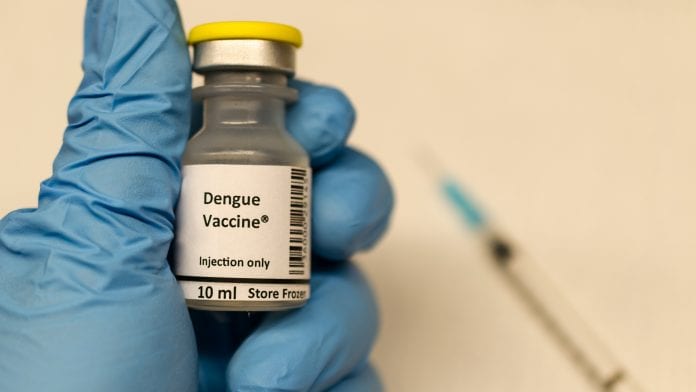
Earth Observation-based early warning system is rolling out from Vietnam to six more South-East Asian countries – could this help spot dengue fever symptoms?
HR Wallingford, a specialist in environmental hydraulics, is rolling out its early warning system for dengue fever symptoms from Vietnam to six other South East Asian countries following an extension to its grant by the UK Space Agency. Cambodia, Laos, Malaysia, Thailand, The Philippines and Sri Lanka will now benefit from the work – which uses Earth Observation (EO) technology and hydrological models – to improve prediction of this debilitating disease.
Detecting dengue fever symptoms with D-MOSS
D-MOSS (Dengue forecasting Model Satellite-based System) the ground-breaking system combines EO from satellite data with weather forecasts and a hydrological model to predict dengue epidemics up to six months in advance.
Warning of the timing and magnitude of peak dengue incidence is advantageous, greatly aiding the management of scarce resources to strengthen surveillance and control of the mosquitos which spread the disease.
Over the next two years, D-MOSS will be expanded to cover the six new countries using publicly available data. Predictions will also be made at a lower level where supporting data from partners is obtainable. To this end, HR Wallingford has collaborated with the International Medical University and the Ministry of Health in Malaysia and is looking to forge links with similar organisations in the other five countries. In addition, the project team will be looking into the impacts of climate change on dengue at a regional level.
Half the world’s population now estimated to be at risk
The prevalence of dengue fever poses a global health issue, with half the world’s population now estimated to be at risk from this mosquito-borne viral infection (WHO Dengue Factsheet, April 2017). Found in tropical and sub-tropical climates worldwide, mostly in urban and semi-urban areas, the infection causes a flu-like illness which can develop into a potentially lethal complication known as severe dengue.
Dr Gina Tsarouchi, D-MOSS project manager, said: “We hope the grant uplift from the Space Agency will help increase the project’s potential to save lives by providing more decision makers and international agencies with dengue projections.
“D-MOSS has just gone live in Vietnam and the first forecasts have been produced, so we are keen to see this translate into disease prevention on the ground. The EO-based tool could be used worldwide for predicting outbreaks of dengue, as well as for zika, which is transmitted by the same type of mosquito.”
More about HR Wallingford
HR Wallingford leads the research consortium and works alongside international organisations. It is sponsored by the UK Space Agency’s International Partnership Programme (IPP), a five-year, £152 million (~€170 millionf) programme designed to partner UK space expertise with overseas governments and organizations to deliver sustainable, economic or societal benefits.








dengue is a mosquito-borne viral infection causing a severe flu-like illness and sometimes causing a potentially lethal complication called severe dengue. Dengue may include high fever, headache, vomiting, muscle and joint pains. It is also known as breakbrone fever. Ratan Hopitals provide full care to their patients with the help of well-trained doctors, nurse and equipped machines.